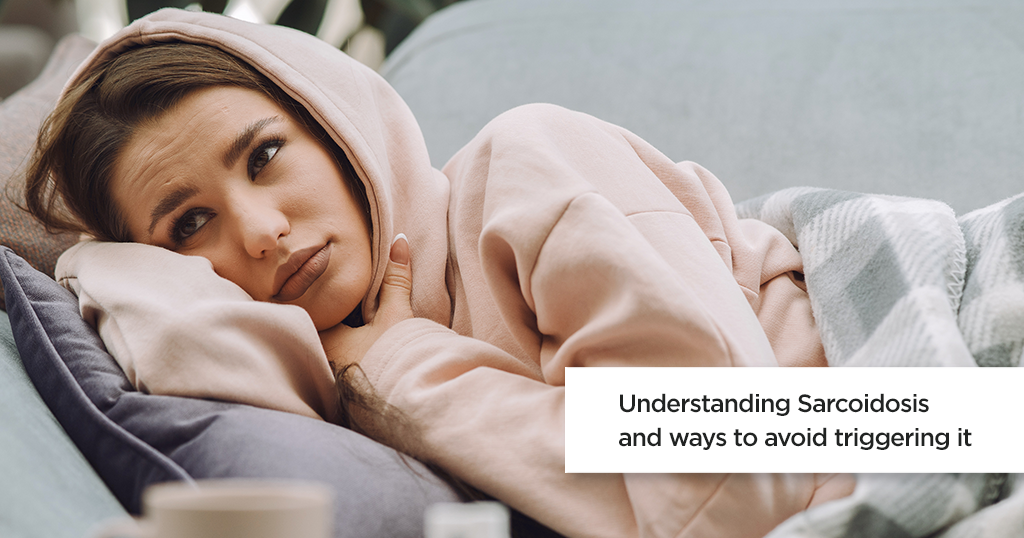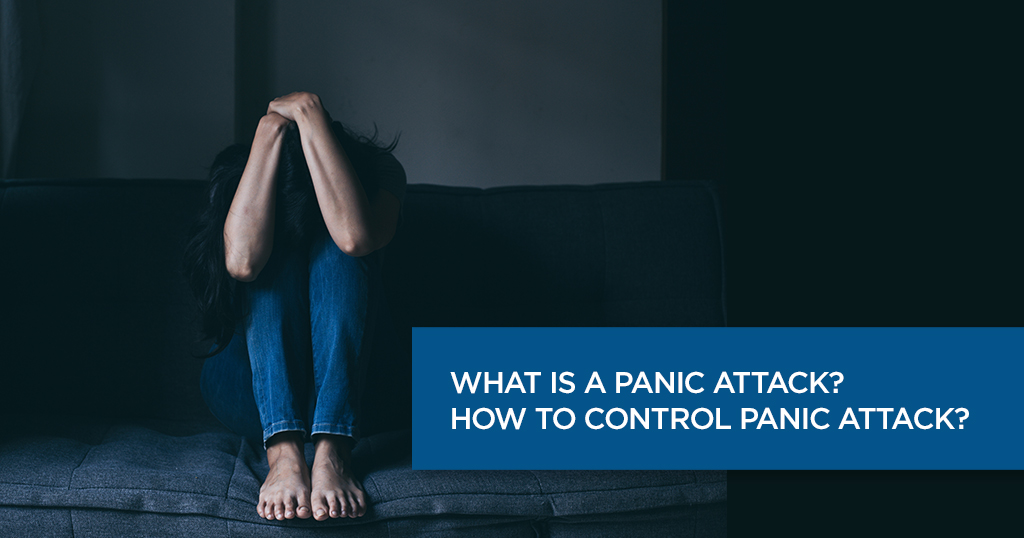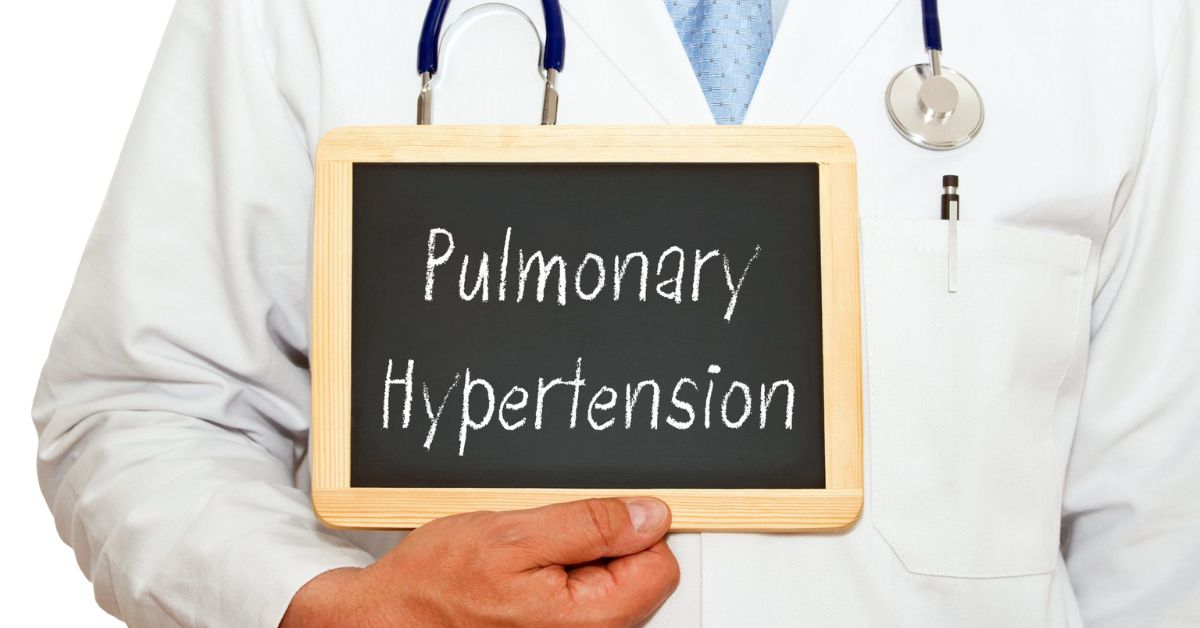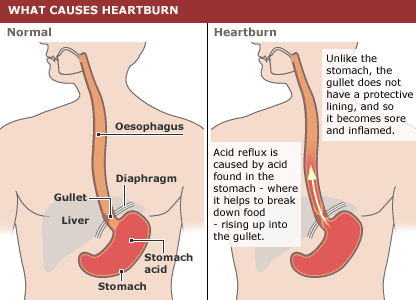Understanding Sarcoidosis- And ways to Avoid Triggering It


Sarcoidosis is a chronic inflammatory disease commonly seen in the lungs and lymph nodes, but may occur in any organ of the body. Granulomas (or clumps of inflammatory cells) form in various organs which results in organ inflammation. Sarcoidosis may be triggered by the body’s immune system responding to foreign substances like bacteria, viruses, or chemicals. The cause is unknown, and it can suddenly appear and disappear or develop symptoms that can stay for a lifetime.
The disease is neither contagious nor it is inherited. Although there is no cure for sarcoidosis, most people do well without any treatment or medical help.
Symptoms of Sarcoidosis
Sarcoidosis is often challenging to diagnose and is sometimes confused with other diseases. The symptoms vary from person to person and mainly depend on the area of the body that has been affected. However, the general symptoms include –
- Swollen lymph nodes
- Fatigue
- A sense of illness and discomfort
- Fever
- Swelling in the joints and pain
- Depression
- Weight loss
If your lungs have been affected by this disease, you may observe some respiratory symptoms such as :
- Wheezing
- Pain in the chest area
- Persistent dry cough
- Shortness of breath
If your skin has been affected, you may see the following symptoms –
- Raised bumps on the skin surface
- Skin rashes
- Lesions on the cheeks, ears, and nose
Sarcoidosis affecting the eyes shows symptoms such as :
- Dryness of the eyes
- Sensitivity to light
- Severe redness
- Irritation and blurry vision
Signs of cardiac sarcoidosis may include –
- Irregular heartbeat, also known as arrhythmias
- Shortness of breath
- Swelling of the body due to surplus fluid
- Palpitations
- Fainting
Some people may experience sudden symptoms that will appear and disappear quickly, while others may not show any symptoms.
Complications of Sarcoidosis
Around 50 percent of sarcoidosis patients go into remission within a year of showing symptoms, while 15 percent of the cases reach advanced stages with life-changing effects.
- If pulmonary sarcoidosis is left untreated, it can lead to permanent scarring of the lungs with breathing difficulty, or pulmonary hypertension.
- The disease causes fluctuations or abnormalities in the calcium levels, leading to kidney stones and reducing kidney functions.
- Cardiac sarcoidosis can disrupt the normal functioning of the heart, blood flow, and heart rhythm, which can lead to death in rare cases.
- This chronic disease may cause inflammation of the eyes, thereby damaging the retina or causing cataract disorders and
Risk Factors
The factors which make you vulnerable to the disease include –
- Race
While sarcoidosis can affect people of all ethnicities and races, it is commonly observed among the people of Scandinavian and African American descent, both in terms of severity and prevalence.
- Age and Sex
This disease can occur at any age, but commonly observed in people aged between 20 and 60 years. Also, women are more likely to develop sarcoidosis than men.
Recommended Tests (Diagnosis)
The doctor may suggest an ACE-level test to diagnose sarcoidosis or suggest suitable treatment because the level of ACE in the blood increases due to the presence of granulomas that are associated with sarcoidosis.
Your doctor may also advise a few additional tests depending on your previous test results.
- Chest X-ray- This is used to spot granulomas and swollen lymph nodes.
- Chest CT scan- An imaging test showing your chest’s cross-sectional pictures.
- Lung function test- The results of this test determine whether or not your lungs are functioning at their normal capacity.
- Biopsy– In this test, a tissue sample is taken from your body to check for the presence of granulomas.
In addition to these, your doctor may also suggest blood tests to ensure the proper functioning of the kidney and liver.
Treatment of Sarcoidosis
A specialist will recommend medications depending on your physical health and the severity of the disease. Different medications are prescribed including the following :
- The first set of treatment involves corticosteroids.
- Consuming drugs like methotrexate (Trexall) and azathioprine (Azasan, Imuran) helps in reducing the inflammation by suppressing the immune system.
- Inflammation can also be treated by injecting TNF inhibitors in IV or under the skin.
- Hydroxychloroquine or Plaquenil might also prove to heal skin lesions and high levels of calcium in the blood.
Depending on your complications or symptoms, you may be recommended the following treatments –
- Physical therapy for improving muscle strength and reducing fatigue.
- Pulmonary rehabilitation for decreasing respiratory symptoms.
- Implanted cardiac defibrillator or pacemaker.
Self-care strategies
- Take medication as prescribed.Do not stop taking medicines without talking to your doctor even if you start to feel better. Do not miss ongoing monitoring or any follow-up appointments. Let the doctor know if you have new symptoms.
- Make healthy lifestyle choices.Eat a healthy diet, maintain healthy weight, get adequate sleep and manage stress.
- Participate in regular physical activity.Engage in regular physical exercise. This can strengthen muscles, reduce fatigue and improve mood that may interfere with your daily activities.
- Stay away from smoking.
- Get the eye examined by an eye specialist to detect early eye inflammation arising out of sarcoidosis.
FAQs:
- What triggers sarcoidosis?
Any person from any ethnicity or race can contact the disease, African American and Scandinavian origins are more likely to develop sarcoidosis. Moreover, if you are a woman aged between 20 to 60 years, your chances of acquiring the disease are high. People who smoke or are exposed to harmful chemicals, bacteria, and viruses are at risk of triggering sarcoidosis.
- What are sarcoidosis and its symptoms?
Sarcoidosis is a chronic disease in which the immune system overreacts to create clusters of inflamed tissues called “granulomas” in different body organs.
The symptoms vary depending on the area of the body affected. Some of the common symptoms include swollen lymph nodes, fatigue, weight loss, fever, depression, and swelling of the joints. Other symptoms for sarcoidosis in the lungs, skin, and eyes include wheezing, chest pain, dry cough, blurry eyes, palpitations, skin rashes, etc.
- How does vitamin D affect sarcoidosis?
Patients with sarcoidosis, when prescribed with Vitamin D, show an increased risk of hypercalcemia, indicating high levels of calcium in the blood. In such cases, more appropriate screening is required.
- How do you know if sarcoidosis is active?
During the active phase of sarcoidosis, the granulomas develop and grow. The associated symptoms can show up, and the scar tissues can form in the region of such growth. During the inactive phase, the inflammation starts to reduce, and the granulomas stay the same size or shrink.
- How can I cure my sarcoidosis?
Unfortunately, there is no cure for sarcoidosis. But with proper treatment, the symptoms begin to improve. Specific precautionary measures like quitting smoking and staying away for substances that harm the lungs can reduce the possibility of the flare up of the disease.
© Copyright 2024. Apollo Hospitals Group. All Rights Reserved.
 +91 8069991061
Book Health Check-up
Book Health Check-up
Book Appointment
Book Appointment
+91 8069991061
Book Health Check-up
Book Health Check-up
Book Appointment
Book Appointment







